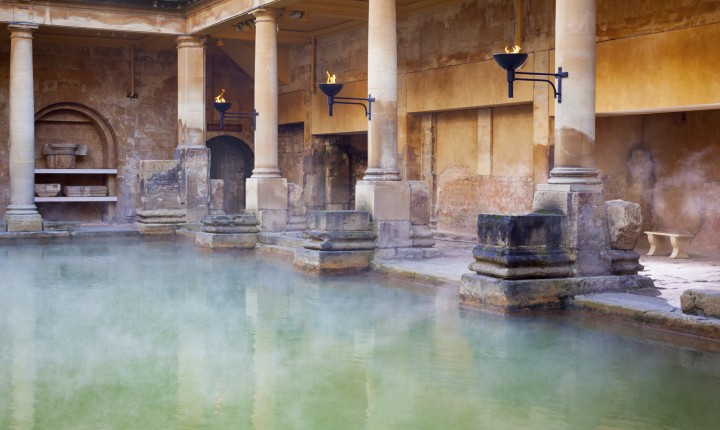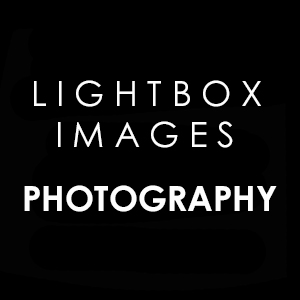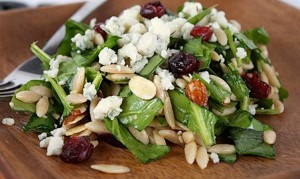I just got back from a trip to Turkey and Morocco; while there I have realized that in both countries men tend to take care of their skin. For Turkish and Moroccan men, the Hammam or Turkish bath is a part of a ritual. The hammam is a variant of the Roman bath, Thermae; it has its origin in Roman baths.
Morocco is known for plenty of things: great food, an all-over body cleanse that scrubs the dead skin away better than any other and, probably most popular, its Argan oil.
While in Morocco I introduced my son to the hammam—and he loved the experience. He couldn’t believe how soft his skin was afterward. A hammam is a steam room, similar to a Turkish bath, where Moroccans habitually go each week to clean themselves. Cleanse does not mean shower—it is about exfoliating the skin. The hammam is an incredibly important part of Moroccan culture and life. Men, women, and children will visit their local hammam at least once a week, following the long rituals for cleansing their bodies until their skin glows. At a young age, Moroccan men learn to take care of their skin, while in the Western world most guys are about as comfortable discussing skin care or seeming concerned about looking good as they are with holding a woman’s purse while she is shopping. Take inspiration from an old Moroccan tradition and learn some unique grooming secrets to add to your own tool kit.
Hammam/Turkish bath experience
Since there are no hammams in the US, the best way to get this kind of soothing experience is by using a steam bath or simply a very hot shower. Make sure your bath or shower is as hot and as steamy as possible. It is important for your skin to be warm and humid for best results, as sweating opens up your pores and the heat helps in releasing the toxins. Once you start sweating, use a loofah (also called kiis in Morocco).
Step 1
Start scrubbing your body with the loofah in a vertical motion (never circular). Rub with great enthusiasm in order to remove all the dead cells. You will see the dead skin peel away. (Warning—it’s rather gross, but very worth it. If you don’t see grey bits of skin, you need to scrub MORE.) It is like sandpapering your skin and you will be embarrassed and amazed by all the dead skin and dirt coming off your body. Regardless of how often you shower, you will never be able to get rid of all the dead cells glued to your skin!
You should never put soap on the loofah—only water—and don’t put any soap on your skin before scrubbing (in Morocco, a black soap is used before exfoliating; you soak in it for 10 minutes in a hot room, rinse it off, and exfoliate afterward. I skipped this step since it is more time consuming, but if you have the time, go for it). Moroccan Black Soap / “Beldi” soap is traditionally made with Argan oil from the Argan tree. It is highly nourishing while at the same time loosens up dead skin for exfoliation. You can also try the black Moroccan exfoliating glove (you can find this online; the price should not exceed $10). Remember to never put soap on it, and it will last you one year (still softer then the Roman strigil).
Soap is made with olive Black Moroccan exfoliating glove


Step 2
After exfoliating, rinse off all the dead skin and, using your regular soap, lather onto your skin.
Step 3
After drying or on wet skin, apply some Argan oil. I personally prefer it on a wet skin since your skin is still damp and it will absorb the oil better; it also helps by using a lesser quantity because real Argan oil is expensive but worth it. I’m about ready to declare argan oil as the best beauty ingredient, period.
Argan oil
 Argan oil is a simple vegetable oil that performs small miracles. It’s been the secret of the Moroccan Berber people for thousands of years. And it’s not that they’ve been hiding it.
Argan oil is a simple vegetable oil that performs small miracles. It’s been the secret of the Moroccan Berber people for thousands of years. And it’s not that they’ve been hiding it.
The Phoenicians are on record as trading this same Argan oil as far back as 1550 B.C. Egyptian medical records show its use in the 11th century and history traces the oil to use England in 1711 and on to present time. Argan oil has been “rediscovered” in the late 20th century and brought to the modern world of cosmetics. Because of Argan oil’s increasing popularity, many skin care companies are jumping on the Argan oil bandwagon. But Argan isn’t NEW! I recommend buying 100 percent pure Moroccan Argan oil for best benefits—and be careful, many oils out there are not authentic; they are mixed with other oils. If you buy Argan oil there should be no other ingredient in the product.
There are two types of Argan: the edible one with a nutty smell and the cosmetic one. The edible Argan is roasted before pressing while the cosmetic one is cold pressed. Remember when buying Argan that a 100 percent pure Argan oil slips into the skin without leaving any oily or greasy feeling.
Why is Argan oil so expensive?
 Argan is rare since it grows only from a specific strain of trees in one solitary corner of southwest Morocco. This tree has been known for thousands of years as The Tree of Life and more recently, its oil has been called Liquid Gold.
Argan is rare since it grows only from a specific strain of trees in one solitary corner of southwest Morocco. This tree has been known for thousands of years as The Tree of Life and more recently, its oil has been called Liquid Gold.
After the fruits from the Argan trees are harvested, they are dried and the thick peel is removed. The inner flesh is also removed by hammering with a large flat stone.
The next stage involves cracking the nut to release the small soft almond-like kernels. It’s not easy! This part of the process is the most time-consuming and explains why the oil is so expensive. The traditional method of pressing involves grinding the kernels to a paste by crushing them between two flat round stones turned by hand, labor-intensive and time-consuming (that’s the old traditional Berber way; most of the cooperatives have a machine now to press the kernel). For culinary oil, the kernels are roasted before pressing to give it a nutty taste.
Where can you buy Argan oil?
You can buy it online from Saadia Organics or Zamouri Spices
You can also find it on Amazon.com.


If you want to get it a little cheaper and be certain of the authenticity, you can get in touch with a cooperative in Morocco.
Tighanimine Cooperative is my favorite. You can contact Nadia Fatmi at: cooptighanimine@yahoo.fr
Tighanimine is the very first Fairtrade certified Argan oil cooperative in the world. The Cooperative is formed of 50 farmers, all women. Unemployment is hitting high levels in the region, and families live in dire circumstances. This is why in Tighanimine, a group of women of the local Douar (Berber village), decided to take action by creating the very first Fairtrade certified Argan oil cooperative in the world. Through this, they have been able to introduce their product to overseas markets and lift themselves out of poverty.

There is also Targanine, an Argan distributor from Morocco who has a representative in Canada that can be reached at:
Mizyen Entreprises
Toronto Canada
Tel. +1 416 769 8041
E-mail : mizyen@sympatico.ca
Of course I couldn’t leave without buying some of a cooperative’s products and thought it would be great to share: I have a Moroccan loofah and a 60 ml pure Argan bottle (see above picture). For a chance to win it, you can Enter Here, fill out your name and e-mail address, and write “Argan contest” as the subject. The drawing will be on August 29, 2014.
I hope this article was helpful! Have a good scrub, and as always, if you need guidance, if you need help with Argan products, or if you are feeling adventurous with your wardrobe and want to step it up a bit, contact me at Leila@thenouveaustyle.com.
Related Posts
One Response to The Modern Gladiator—Thermae
Leave a Reply
You must be logged in to post a comment.











[…] http://modgladiator.wpengine.com/2014/08/10/the-modern-gladiator-thermae/ […]